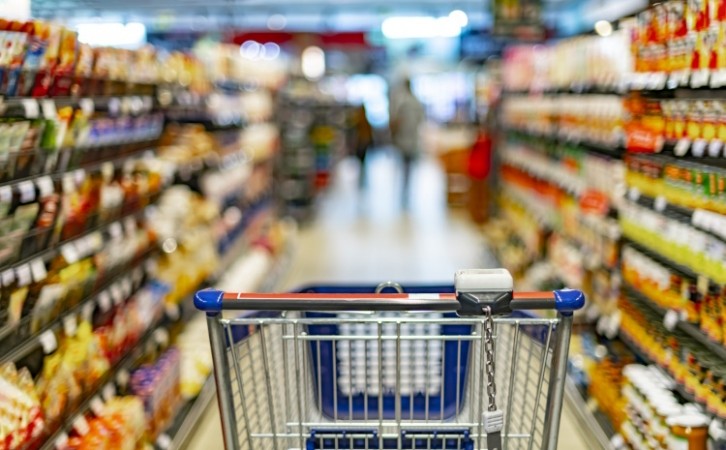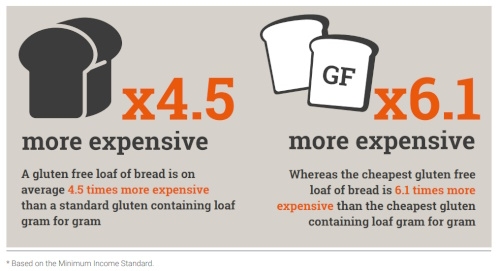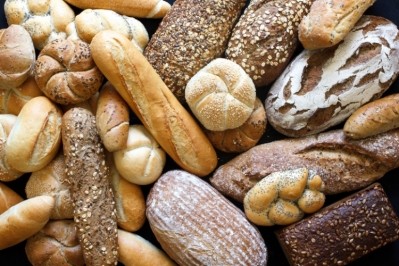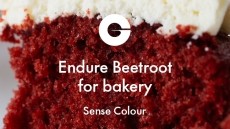Why are people with celiac disease suffering more at the tills?

The latest report from the health watchdog found that a basket of GF baked goods costs the sufferer up to 35% more for a weekly food shop.
Analyzing the average cost of GF food to its gluten-containing equipment between March 2022 and March 2024, Coeliac UK claims that gram for gram:
- Bread loaves are 4.5 times more expensive
- Plain flour is 2.0 times more expensive
- Bread rolls are 3.1 times more expensive
- Pasta is 2.0 times more expensive
- Crackers are 1.7 times more expensive
- Cereals are 2.1 times more expensive.
The report also highlights the barriers of access and availability, with:
- 87% of respondents describing problems with overall availability of GF products
- 86% unable to fulfil all their needs at one shop
- One in three GF products available online are typically out of stock.
At what cost?
In the current economic climate, this is having serious implications, claims Coeliac UK.
Seven in 10 people with celiac disease or gluten intolerance find the stress of shopping for the specialized products is ‘adversely affecting their quality of life’, with many opting to risk consuming gluten.
But it’s not a disease to take lightly. Celiac disease is estimated to affect one in 100 people in the general population of the UK (for first degree relatives of a person diagnosed with the disease the risk increases to one in 10).
It’s a serious autoimmune condition that has only one treatment: to follow a medically prescribed GF diet. However, 27% of sufferers are opting to purchase products with ‘may contain’ claims, while 4% are actively eating gluten due to cost concerns.
Those on the lowest incomes are the hardest hit. Coeliac UK’s retail research found that between December 2022 and March 2024, GF bread increased by almost 7p per 100g, while its gluten-containing equivalent increased by less than a penny per 100g. That means that, gram for gram, the cheapest GF loaf is 6.1x more expensive than the cheapest gluten-containing loaf.
“The findings from the Coeliac UK report highlight a critical concern: many patients struggle to afford the only effective treatment for their condition – a strict gluten-free diet,” said Nick Trott RD, gastroenterology dietitian at the Royal Hallamshire Hospital & The University of Sheffield.
“Ensuring affordable access to gluten free foods is essential for the wellbeing of the celiac community.”
According to Coeliac UK, detractors unfairly suggest people with celiac disease can simply avoid gluten by resorting to alternatives, such as rice or potatoes. Substituting these for GF bread, however, could reduce iron and calcium intake by up to 96% and 93%, respectively. This is significant as people with celiac disease are recommended to have a higher intake of calcium, due to previous or potential ongoing malabsorption, said the charity.
Breaking it down
The additional cost in developing GF goods is ascribed to:
- The use of alternative flours like almond, coconut, rice or chickpea flour, which are more expensive than wheat flour.
- The addition of natural additives and binders like xanthan gum, guar gum and psyllium husk to mimic the texture and structure of gluten.
- The need to be produced in dedicated gluten free facilities to avoid cross-contamination, which can lead to higher operational costs
- The necessity for specialized equipment – separate from those used for conventional baking to again avoid cross-contamination – which adds to capital expenditure
- A smaller pool of GF ingredient suppliers, which can result in higher prices due to less competition
- Being produced in smaller batches, leading to higher per-unit costs
- Obtaining a GF certification (such as the Gluten-Free Certification Organization), which involves substantial costs for testing and compliance
- The regular testing to ensure products meet GF standards
- The smaller demand, leading to less economies of scale
- The historical willingness by GF consumers to pay a premium for health or dietary reasons, allowing manufacturers to set higher prices
- Creating recipes that don’t compromise on taste and texture, which requires significant research and development.
Playing with health
One lifeline for those struggling with cost and availability is GF prescriptions. For decades, some GF products have been available through the UK’s National Health Service (NHS). However, several Integrated Care Boards (ICBs) across England have reduced this availability: by up to 70% since 2016.
Those living in Wales, Scotland and Northern Ireland can still access GF staples on prescription, but in England it’s become a postcode lottery.
The high price of dietary intolerance
The cost implications of Free From are not exclusive to the UK market. In 2023, research by Compare the Market Australia found GF products sold across seven prominent markets were more than triple the unit price of the original product on average. Read more here.
According to data based on Coeliac UK’s analysis of NHS England GF prescribing policies and expenditure (2016-2023), only 50% of sufferers live in an area that offers the prescription option.
“Being able to receive gluten free bread on prescription is a gamechanger,” said Andrew Bloodworth who lives in Lincolnshire and gets GF bread on repeat prescription.
“It’s a weight off my shoulders having this support with food bills. The prescription is a fantastic safety net and a way of sticking to a gluten free diet – I couldn’t imagine living without this lifeline.”
It’s a different story for Hampshire resident Kate Power. Access to prescriptions was removed by the Hampshire and Isle of Wight ICB at the beginning of 2024 and Power has definitely noted the additional strain on her weekly budget.
“We’re now spending an extra £15 on average on our weekly shop because the prescription was removed,” she said.
“We’ve tried to cut down on food like bread, but it’s still had a big impact on us as a family.”
The rise of gluten free
The overall trend towards healthier eating habits is driving the growth of the GF market, which has experienced a CAGR of 8%-10% over the past decade. According to Coeliac UK, the local market is currently worth an estimated £835m per year and shows no signs of slowing down.
The foundation for this is the surge in innovation, with new products continuously being developed to meet the standards of taste, texture and nutritional value. GF brands are also focusing on clean labeling and using more natural ingredients.
Major supermarkets like Tesco, Sainsbury's, and Morrisons have also come to the party and while still niche, have expanded their product offerings and created dedicated aisles.
However, a particular driver is the perception that following a GF lifestyle is healthier or can aid in weight management. As such, the products are not exclusively bought by consumers with celiac disease or gluten intolerance, but by a wider audience interested in health.
“Celiac disease is not a diagnosis anyone would want, even without the additional financial burden laid out in this report,” said Dr Gerry Robins, consultant gastroenterologist at York Hospital.
“As a clinician, I’m seeing more and more patients who simply cannot afford the gluten free staple foods they need to treat their condition.
“People have a right to high quality nutrition at reasonable prices – unfortunately significant numbers of celiac patients are now being forced into a situation where they have to forgo the only treatment that makes them better (gluten free food) or go hungry. This is a significant public health issue and requires urgent action.”
As such, Coeliac UK is calling on the next UK Government to update guidance for ICBs that reiterates the critical role of the gluten free diet in treating the disease.
The charity is also advocating to meet with Government representatives to develop best practice models to protect access to gluten-free prescriptions for those who need it.
It’s also asking that Government meets with other health experts, along with patient representatives to better understand their concerns and learn about the patient experience.
Finally, Coeliac UK is inviting food industry partners that have yet to engage with it to join its journey in addressing the factors that make GF food more expensive.
“The reality for too many people across the UK with celiac disease is that the food that keeps them well is too expensive and hard to access,” said Tristan Humphreys, head of Advocacy for Coeliac UK.
“This is bad news for the NHS that has to treat resultant health complications and devastating for the individuals impacted. The solution requires action from both Government and industry, and we hope the stark realities laid out in this report, coupled with the welcome support from stakeholders, can prove a catalyst for meaningful change for the coeliac community across the UK.
Industry response
Chris Hook, business director of Warburtons Free From – the dedicated GF product line of the well-known UK bakery brand – and a member of Bakery&Snack’s editorial board, said the business is justifiably proud of being able to “provide quality products at a fair and reasonable price to consumers who want to experience the same quality and flavors they would expect in conventional bakery.
“We have a dedicate team of technical and procurement experts who continuously review the sourcing of ingredients and formulation of our products to deliver products without compromise at the best possible cost to our consumers.
"Baking Gluten Free products is complex and we have to work extra hard to emulate what gluten does in a standard loaf, without compromising on quality. Everything from the volumes we make, the ingredients we source to how they’re made in our dedicated bakery is different to baking standard products."
According to Liam O’Doherty, senior commercial business manager for Warburtons, there are a number of key factors that drive up the cost of free from bakery goods.
Ingredients
“To deliver Free From Bakery products that don’t compromise on quality or flavor, a number of additional ingredients are used to mimic the functionality of gluten,” O’Doherty told Bakery&Snacks, noting this obviously adds cost and complexity into the FF baking process.
Variability
Due to the scale and subsequent sourcing of ingredients, variability of performance is a constant battle.
“This means a number of ‘test bakes’ are required to ensure new ingredient batches perform to expected quality standards, and again, add additional cost to the process,” said O’Doherty.
Batch sizes
“The scale of FF bakery is much smaller than conventional and as a result, the baking process is more labor intensive with less automation to drive the economies of scale you would expect to see in conventional baking,” he added.
Allergen control
Warburtons produces its Free From products in a dedicated bakery in Newcastle to ensure there is no cross-contamination with gluten-containing equivalents. This facility is equipped with specialized equipment and adheres to strict GF standards.
“Safeguarding the safety in use of our products and giving consumers a product they can trust is free from key allergens – such as gluten, wheat and milk – is critical,” said O’Doherty.
“This requires stringent testing and critical control measures, which again, add cost and complexity into the baking process.”
When approached for comment, Doves Farm and Freee Foods said they had both reviewed Coeliac UK’s report and consider it to be “laid out reasonably well”.
The new findings are an update to Coeliac UK’s 2022 report: The gluten free diet: How much does it cost and why does it matter?
Data was sourced from major UK supermarkets, recording over 1,000 shopping trips from the community. The weekly food shop is based on a Minimum Income Standard (MIS) basket, which represents a reasonably costed, adequately nutritious diet developed by Loughborough University’s Centre for Research in Social Policy’s (CRSP).
The prices of all bread, staple substitute products and shopping basket items were collected every six months from the websites of major supermarkets over a two year period (March 2022 to March 2024).























